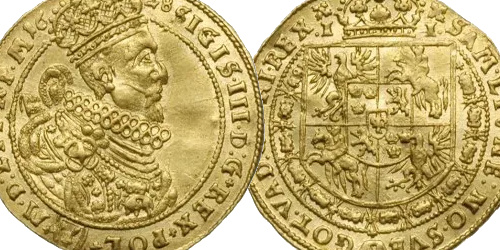Wanted for the highest denomination of the guilder issue.
Printed in a low circulation, as evidenced by the fact that the entire population is marked with only one F series.
One of the most beautiful WMG banknotes, which arouses the admiration of collectors from all over the world. The intense red color of the print and the beautiful design with the exquisitely exposed Neptune monument attract attention. It is the presented value that very often constitutes the cover of auction catalogues.
The banknote is certified by PMG and graded PMG 65 EPQ. A natural copy.
An excellent opportunity to purchase the highest denomination of WMG guilders in full mint condition.
The Free City of Gdańsk was established in November 1920 under the terms of the Treaty of Versailles. The issue of the currency system was left to the decisions of the city authorities. Initially, the Deutschmark was retained in this area. However, due to the rampant inflation in Germany, it was decided to establish its own currency - the guilder divided into 100 pfennigs. It became legal tender at the end of 1923 and remained until 1939. The paper money issued in Gdańsk featured the iconography of the city.
On November 20, 1923, when the currency was changed from the mark to the guilder, the exchange rate was set at 1 guilder = 750 billion marks. Due to the fact that the decision to change the currency took place on November 6, 1923, there was not enough time to prepare coins and banknotes. Initially, Gdańsk banks established a temporary issuing institution - the Gdańsk Central Bank, which was to operate until March 31, 1924. It issued unilateral temporary paper money in denominations of 1, 2, 5, 10, 25 and 50 pfennigs and 1, 2, 5, 10, 25, 50 and 100 guilders. This money was legal tender until April 30, 1924. After that date, they were exchanged for money from the Bank of Gdańsk (Bank von Danzig) for half a year. The first guilder banknotes of the new Gdańsk issuing institution appeared in circulation in mid-March 1924. They all have the same style. Their graphic design included the city's great coat of arms, elements of urban architecture and sculptural details. All guilder notes were printed at the British securities printing house Bradbury, Wilkinson & Co. Ltd, New Malden, Surrey.










